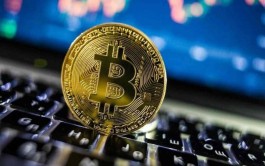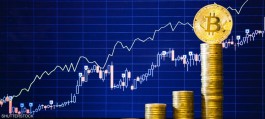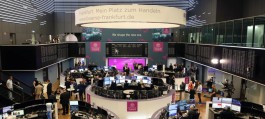Asian stock prices fell on the first trading day of the new year after US stocks retreated from their highest levels ever last Friday, as the impact of the expected reduction in US interest rates during this year dissipated.
Benchmark stock indices in mainland China and Hong Kong saw declines, while stocks in Australia rose. Sentiment also declined after ASML Holding NV, which makes semiconductor manufacturing equipment, canceled shipments of some of its devices to China at the request of US President Joe Biden's administration, according to people familiar with the matter.
US stock futures were little changed, while Bitcoin rose above $45,000 for the first time since April 2022. Asia's cash Treasury market was closed for a holiday in Japan.
In his annual New Year's address on Sunday, Chinese President Xi Jinping pledged to boost economic momentum and create jobs, while acknowledging that some businesses and citizens faced a difficult 2023. He said in the televised message: We will work to consolidate and enhance the momentum of economic recovery, and work to achieve sustained and long-term economic development.
A difficult year for the Chinese economy
The Chinese economy could face another difficult year in 2024, according to Mark Matthews, head of Asia research at Julius Baer. He told Bloomberg TV: President Xi made it clear that his priority on the economic front is to reduce the size of the real estate sector and its importance in the economy. This process will be painful.
The dollar fell against most of its G10 peers, while 10-year Treasury futures fell.
Oil rose after Iran sent a warship to the Red Sea in response to the destruction of three Houthi boats by the US Navy over the weekend, a move that risks escalating tensions and complicating Washington's goal of securing a vital waterway for global trade.
Back to the beginning
Signs of stress emerged after the S&P 500 rose more than $8 trillion last year, with the index continuing to post gains for the ninth straight week. Traders looked past the uncertainty surrounding the Federal Reserve, recession anxiety and geopolitical risks. Many people who entered 2023 with those fears ended up turning to competitors to join the market rally.
“The focus in 2024 shifts from recession and inflation risks in 2023 to degrees of normalization in growth, policy and asset relationships,” Stuart Kaiser, chief US equity trading strategist at Citigroup, wrote in a note. He added: We will be very cautious in buying on the first dip if that happens, but the more growth-oriented Fed may be quicker to the rescue than we expected just a month ago.
After a year of massive volatility and several false moves, the 10-year US bond yield ended 2023 close to where it started. This is an almost comical result for a 12-month period of trading that saw it fall to 3.25% in the wake of the March banking crisis, only to exceed 5% a few months later.
Key inflation data supporting the growing view that central bankers will aggressively cut interest rates in 2024 has fueled strong gains for both stocks and bonds in the past two months. The rise was also driven by Federal Reserve Chairman Jerome Powell's dovish tone at the December policy meeting. However, some investors choose to take a cautious approach.
The real problem is that the Fed has finished tightening monetary policy without adequately considering the level of interest rates that will have some impact as we enter the market,” Vishnu Varathan, head of economics and strategy at Mizuho Bank, told Bloomberg TV.




































